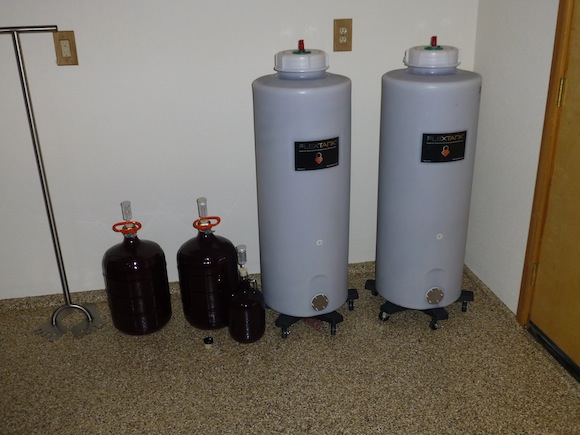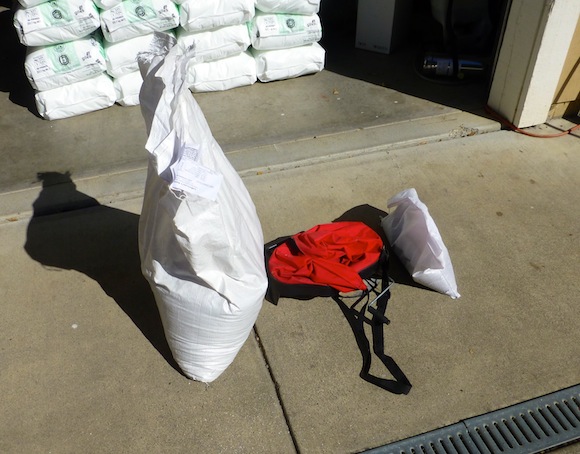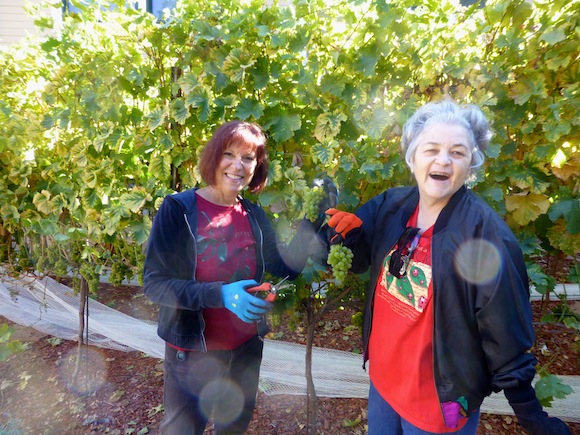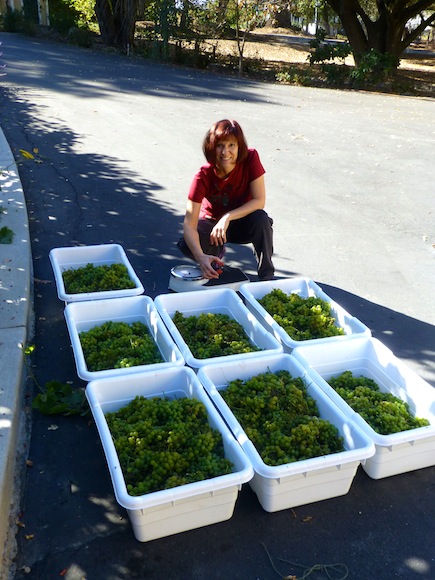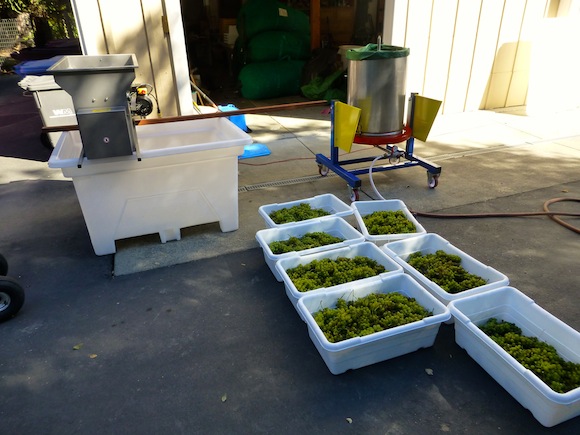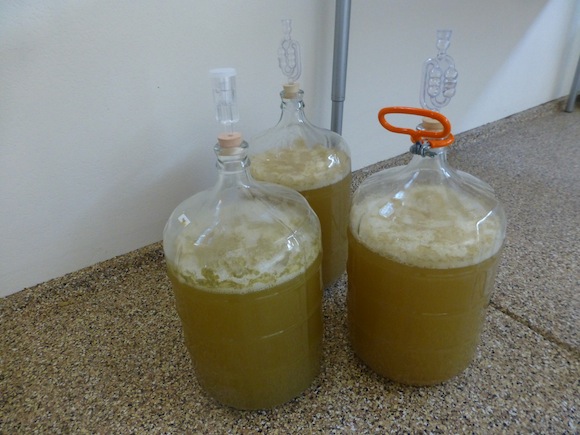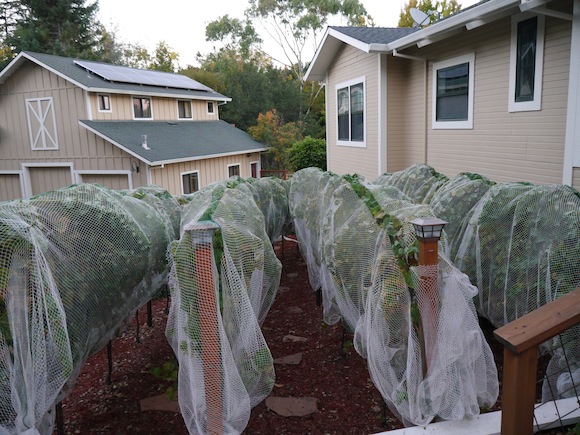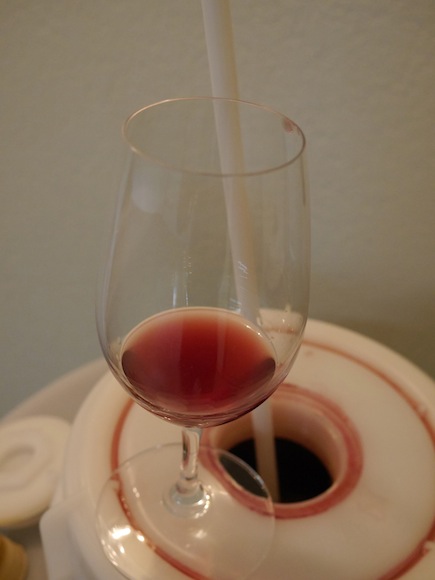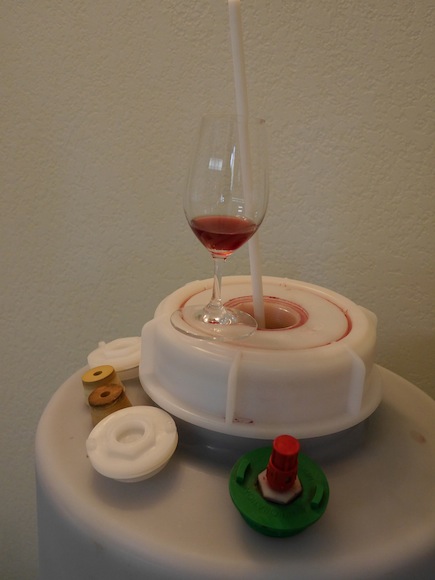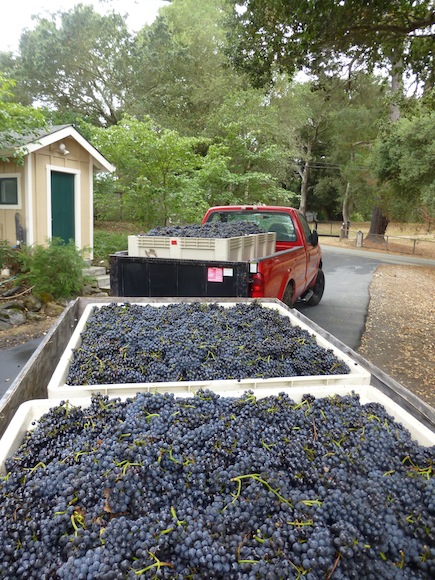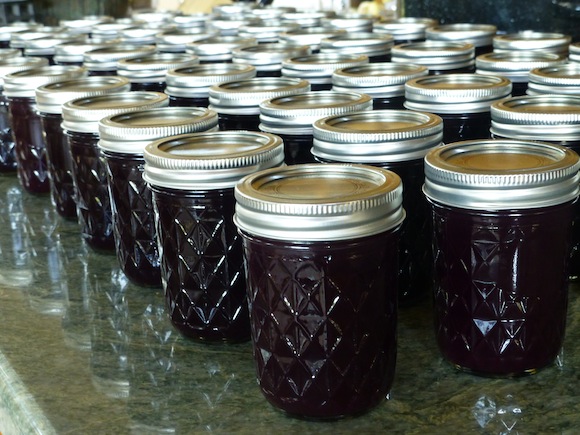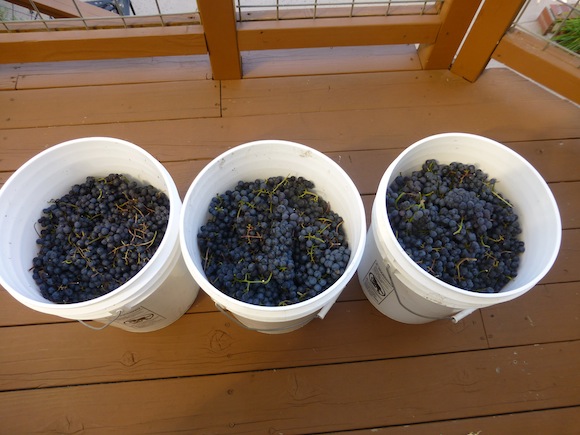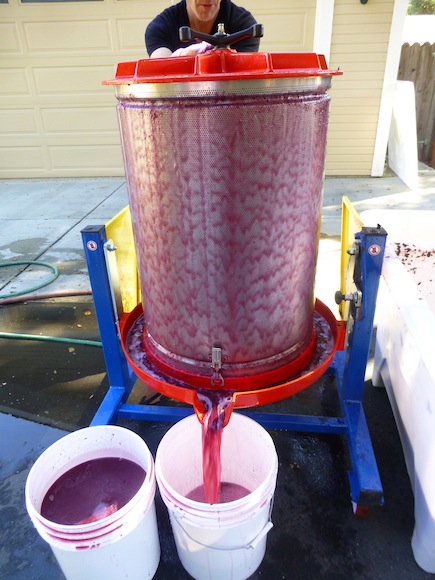
After 5 days cold soak and 8 days of fermentation, it was time to press. This year we pressed when the hydrometer reading hit 0.3, which means we had a little sugar left to ferment. If you are not familiar with a hydrometer it measures the density of the mixture and has a dual scale for density/sugar content.
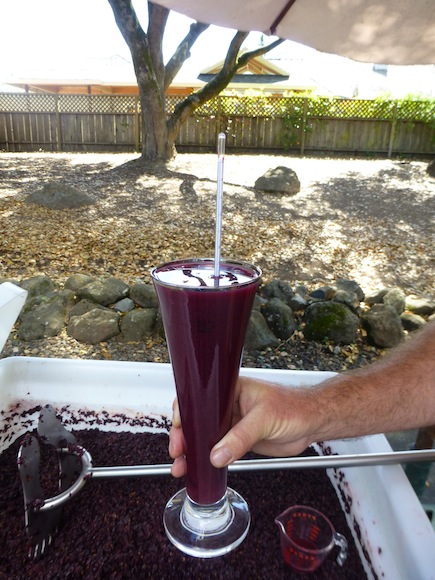
It is the preference of the winery where to press during the fermentation process. Most of the skin tannins are obtained early in the process as they are water soluble and the seed/wood tannins are more alcohol soluble so they are picked up at the end of fermentation. I want a more fruit forward Pinot, so I press early and let the fermentation end when all the skins/seeds/wood are removed.
One thing you can’t see is the intense color and taste of the pressed skins. At the end of the press cycle is very intense wine…that tastes great if you don’t go to long.
After the wine is pressed I allow it to settle for 1 day and then rack off the gross lees. In my opinion, if I left them with the wine and was not careful I could pick up some back sulfur odors.
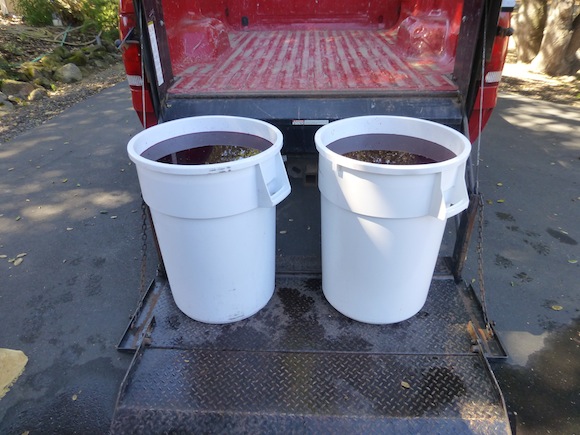
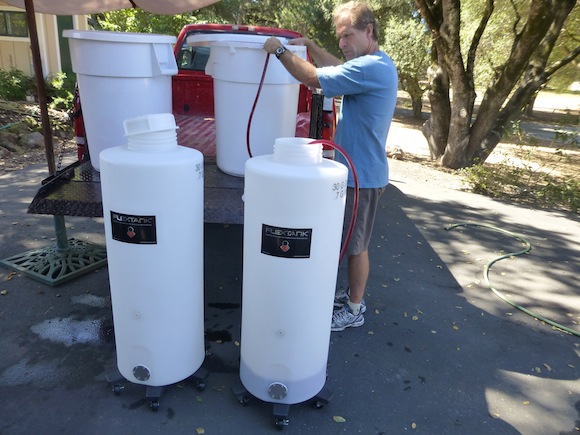
Finally, we have added some French Toasted Oak during malolactic fermentation to allow this flavor to blend in, and then the wine is put to bed while we wait for the malolactic fermentation to finish before we taste the final product. In about 6 weeks we will sulfur and let it age.
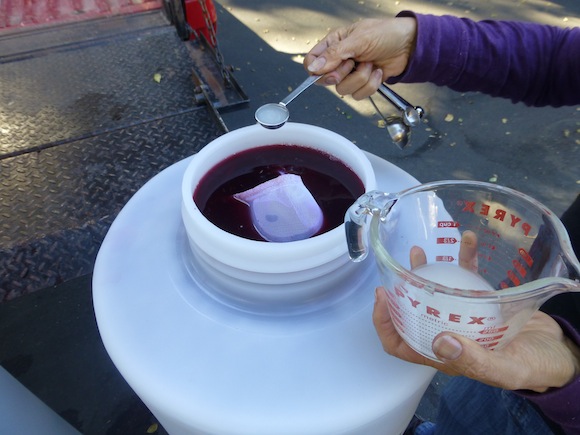
We ended up with 74 gallons of wine from a little over 1/2 ton of grapes.
